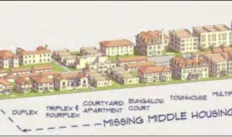Transportation, Housing, Land Use – Sierra Club Principles
Sierra Club’s number one priority is to address climate change – quickly and aggressively!
Montgomery County has transformed over the past several decades from a sleepy bedroom suburb into a vibrant urbanizing community – with well over a million residents. Our location in one of the nation’s most thriving regions gives our county the opportunity and responsibility to make a substantial contribution to addressing climate change.
By designing and implementing smart policies and programs in the realms of transportation, housing, and land use, our county can reduce our greenhouse gas (GHG) emissions (which contribute to climate change).
Sierra Club makes its positions known in a variety of ways – educating the public; endorsing and supporting elected officials who largely understand the world as we see it; letting key officials (both elected and appointed) know our positions on key policies and programs (via meetings, letters and emails, public hearings).
When Sierra Club develops a position on a specific proposal (e.g., BRT on Route 29; new development near the Lyttonsville Purple Line station), we start with a set of basic principles. This set of principles is presented below.
Note – Although we focus on the need to address climate change, we believe our guiding principles will simultaneously lead to greater equity across the county and to an overall higher quality of life.
Let us explain – Many of our basic principles (below) will, when implemented, lead to greater equity in Montgomery County. For example, our focus on improving transit and pedestrian infrastructure will especially benefit those who cannot afford (or can just barely afford) a car – enabling many lower income households to get where they need to go more safely, quickly, and conveniently. Also, our focus on reducing overall housing costs by substantially increasing the housing supply, with special emphasis on affordable housing and units located in transit-served locations, should enable lower and moderate income households to live in more convenient locations (e.g., near transit) without spending more on their combined housing+transportation budget.
In addition, implementing these principles should lead to a greater overall quality of life in the county. For instance, the upgrades in transit and bicycle and pedestrian infrastructure that we support will enable many county residents to spend less time stuck in traffic, and more time on more rewarding pursuits (e.g., family time, exercise time). Also, the push for most new development to be located in walkable, vibrant mixed-use transit-served neighborhoods will mean that many county residents will be able to enjoy the life offered in these attractive places. (And, we note, with plenty of new affordable housing in these neighborhoods, those who will enjoy these neighborhoods will include service workers and teachers, not just well-paid professionals.)
These are our guiding principles in the arenas of transportation, housing, and land use –
TRANSPORTATION
-
Discourage any investment in building new roads;
-
Encourage investment in a variety of transit (including Metro, MARC, light rail, BRT, RideOn and other buses);
-
Encourage programs and policies that make transit more safe, convenient, pleasant, frequent;
-
Encourage investment in pedestrian and bicycle infrastructure;
-
Encourage programs and policies that make walking and bicycling more safe, convenient, pleasant;
-
Focus pedestrian and bicycling infrastructure investment so that people can get to the places they want and need to go on a daily or weekly basis (jobs, school, shopping, medical, entertainment, transit).
HOUSING
-
Overall -- encourage more housing in MoCo;
-
Encourage most (at least 80%) new housing units to be located within walking distance of transit stations;
-
Encourage more new housing that is affordable, especially within walking distance of transit stations;
-
Encourage no net loss of existing affordable housing in locations within walking distance of transit stations;
-
Encourage a greater variety of housing types (e.g., more missing middle housing).
LAND USE
-
Encourage TOD neighborhoods that are mixed use, mixed income, lively and fun (including plenty of parks and plazas);
-
Encourage site co-location of facilities (e.g., library + community center; library + school; school + housing);
Important Terms
Walking Distance
There is no specific definition of "walking distance" that is universally agreed upon. The most common definition, however, is half-a-mile. Note that many factors are at play in the way that an ordinary person might view "walking distance" -- the age and health of the walker, the items being transported on the walk (packages, children in strollers), the topography, the amount of interest along the route, the safety of the route.
Affordable Housing
There is no specific definition of "affordable housing" that is universally agreed upon. A common starting point is that a household spending more than 30% of its monthly income on housing is "cost-burdened." This approach, unfortunately, misses the point that a better way of thinking about this is to look at the percentage of the household budget that is devoted to the combination of housing and transportation. Many experts use 50% as the marker -- that is, a household is "cost-burdened" if it is spending more than 50% of its monthly income on the combination of housing and transportation.
In Montgomery County, when we think about providing "affordable housing," we are generally thinking about low income households as well as moderate income households -- housing that will work for lower income seniors, restaurant workers, teachers, police officers.
